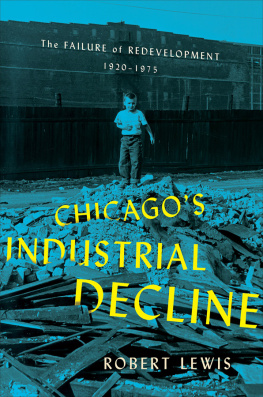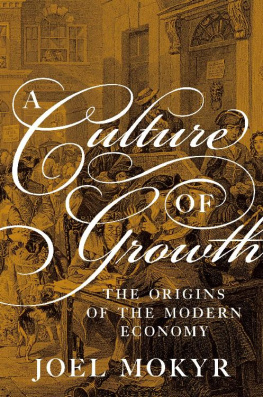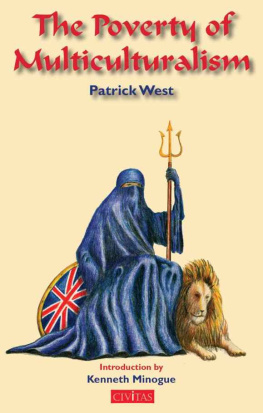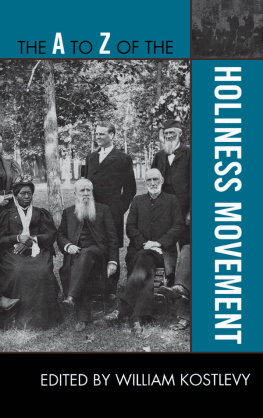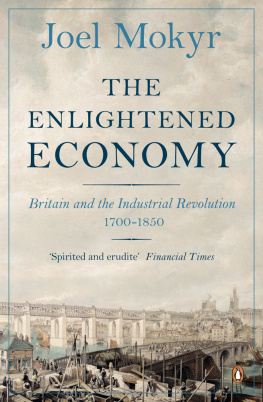ROUTLEDGE LIBRARY EDITIONS: SOCIOLOGY OF RELIGION
Volume 2
ECSTASY AND HOLINESS
ECSTASY AND HOLINESS
Counter Culture and the Open Society
FRANK MUSGROVE
First published in 1974 by Methuen & Co. Ltd
This edition first published in 2019
by Routledge
2 Park Square, Milton Park, Abingdon, Oxon OX14 4RN
and by Routledge
52 Vanderbilt Avenue, New York, NY 10017
Routledge is an imprint of the Taylor & Francis Group, an informa business
1974 Frank Musgrove
All rights reserved. No part of this book may be reprinted or reproduced or utilised in any form or by any electronic, mechanical, or other means, now known or hereafter invented, including photocopying and recording, or in any information storage or retrieval system, without permission in writing from the publishers.
Trademark notice: Product or corporate names may be trademarks or registered trademarks, and are used only for identification and explanation without intent to infringe.
British Library Cataloguing in Publication Data
A catalogue record for this book is available from the British Library
ISBN: 978-0-367-02386-7 (Set)
ISBN: 978-0-429-02545-7 (Set) (ebk)
ISBN: 978-0-367-02501-4 (Volume 2) (hbk)
ISBN: 978-0-367-02502-1 (Volume 2) (pbk)
ISBN: 978-0-429-39921-3 (Volume 2) (ebk)
Publishers Note
The publisher has gone to great lengths to ensure the quality of this reprint but points out that some imperfections in the original copies may be apparent.
Disclaimer
The publisher has made every effort to trace copyright holders and would welcome correspondence from those they have been unable to trace.
ECSTASY AND HOLINESS
counter culture and the open society
First published by Methuen & Co. Ltd
11 New Fetter Lane, London EC4P 4EE
1974 Frank Musgrove
Printed in Great Britain by
Cox & Wyman Ltd,
Fakenham, Norfolk
ISBN o 416 78550 6 hardbound
ISBN o 416 78560 3 paperback
This title is available in both hard and paperback editions. The paperback edition is sold subject to the condition that it shall not, by way of trade or otherwise, be lent, resold, hired out or otherwise circulated without the publishers prior consent in any form of binding or cover other than that in which it is published and without a similar condition including this condition being imposed on the subsequent purchaser. Not for sale in the United States, its dependencies and the Philippine Islands.
Acknowledgements
Chapter seven is based on field-work carried out in the urban northwest. The author is indebted to the Social Science Research Council for financing this inquiry and to Mr Roger Middleton for carrying out the interviews.
The author is also deeply indebted to the individuals and groups who, when approached by research workers who explained the nature and purpose of the inquiry, willingly cooperated either by talking about their outlook and beliefs or by writing answers to questions and making written statements about their experiences, hopes and fears. The names of persons, organizations and places have been changed in reporting the outcome of these inquiries.
Ten years ago the author published a book entitled Youth and the Social Order which examined the position of youth in England in the early nineteen-sixties. The present book was first conceived as a reappraisal of the position of youth after an interval of a decade. The research for the first book was carried out between 1961 and 1963, for the present book between 1971 and 1973. It soon became apparent that a crucial change had occurred: between the first period of research and the second, the counter culture had intervened. This intervention was wholly unforeseen in the early sixties. But it has transformed the position and prospects of youth indeed, it has largely deprived the concept of youth (as teenagers) of its utility. The focus of the new book therefore became the counter culture itself.
Youth and the Social Order examined the problem of youth in terms of their status and power. There was, indeed, a conflict betweeen the young and the mature, but the conflict arose not from significant differences in outlook and values, but from the deteriorating power-base of the young. In the past decade a radical change seems to have occurred : the conflict today is rooted less in problems of power than in differences in values. It is true that today the young probably talk more about power and authority than they did, but the problems of hierarchy and legitimacy which they discuss are not specifically related to age. They are concerned with questions of dignity and deference which arise wherever there are subordinate and superordinate positions. Thus the National Union of School Students makes common cause with assistant teachers in general and members of the teachers movement, Rank-and-File, in particular; the French university students who went to the barricades in May 1968 made common cause with adult workmen. Ten years ago it was possible to examine the position of youth without reference to peculiarly youthful values (except to show that they did not exist); today an examination of differences in values must be central to any analysis of inter-generational strife.
In the nineteen-forties Margaret Mead argued that the values of the young must be radically different from those of their elders, because of the rapidity of social change.
In the early nineteen-sixties Abrams and Little could find no evidence that the young in England were in any sense a new political generation : There has been no breakthrough and there is little prospect of one. Even James Coleman (in The Adolescent Society) only succeeded us showing that sociable, non-intellectual, athletic middle-class youth were precisely like their suburban parents.
There was no student revolt. In American universities students were complacent, in English universities suicidal. The Jacob Report of 1957, which reviewed postwar American research into the characteristics of college students, described them as quiescent, even gloriously contented, offering no radical questioning or re-appraisal of their society.
Ten years ago the young were fighting to get in; today they are often fighting to get out. They have now seen that there may be viable alternatives to straight insider positions and styles of life. Ten years ago protest was about status and power; and it took one principal form massive movement towards earlier marriage. In 1921 some 5 per cent of new husbands were under twenty-one, 15 per cent in 1965. For new wives the corresponding percentages were 15 and 41. This was the major adolescent rebellion of ten to twenty years ago, the most significant invasion of the adult world, the most determined assault to secure status in a society which increasingly denied it. This in itself was a major social change, brought about principally by the increasingly unequal distribution of power and status between the age groups. And it typifies the conflict a rebellion not to beat their seniors, but to join them.


